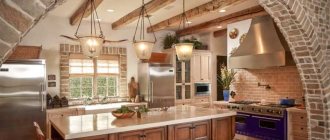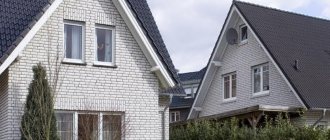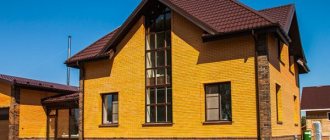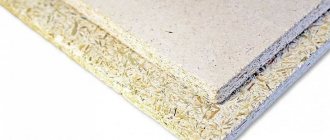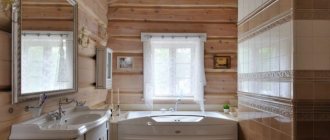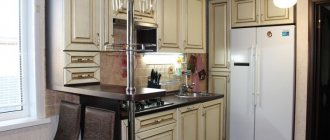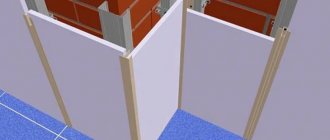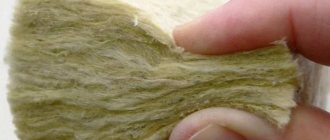The corridor is the first place that a guest sees when entering the house. The design of a brick wall in the hallway will emphasize the refined taste and sense of style of the owners of the house. Decorative brick is a trendy modern material for interior decoration. Designers often propose interior projects using brick in the hallway. The idea is popular due to its ease of implementation, durability of the material and variety of stylistic trends. A fashionable loft, classic, hi-tech or a corner of wildlife - all this has become possible! By using decorative bricks in the hallway to fulfill your idea, you can easily create a stylish, non-standard interior if you do not have bricklaying skills. The speed and ease of installation, the spectacular result and the long service life of the repair make the coating very popular.
By using decorative bricks in the hallway to fulfill your idea, you can easily create a stylish interior.
Material characteristics
For finishing work in the corridor, foyer, hall, hallway, artificial decorative brick is used. Outwardly, it resembles a tile, but in properties it resembles a stone, while weighing less. It is easy to install, environmentally friendly, and has good heat and sound insulation properties. An analogue of the coating, clinker tiles, is non-flammable and is used for lining stoves and fireplaces. Even in unfavorable environmental conditions it can last quite a long time without losing its attractiveness. You can increase the service life of the bricks in the hallway by treating them with a special water-repellent solution. The material has a variety of patterns and geometric shapes. Due to this, you can create architectural compositions, bevel corners, design columns and doorways.
Durable decorative brick.
Pros and cons of using
The disadvantages of use include a higher cost than wallpaper or plaster, and durability, which is less than that of natural stone. Some varieties are fragile and require care and precision when laying them.
Hallway decorated with artificial stone.
But there are many advantages:
1. You can create an original concept only thanks to a spectacular texture and color combination. Manufacturers offer various shades and textures;
Interesting texture of brickwork.
2. Maintenance does not require much effort and time; dirt can be removed with a simple damp sponge;
3. The walls do not need additional strengthening, since the coating is light in weight;
Small-sized decorative stone.
4. Repairs retain their original appearance for a long time, with a service life of more than 20 years. It does not crack and is not afraid of negative environmental influences;
Durable decorative brick.
5. An excellent way to keep the house warm and create insulation from noise effects;
6. If damaged during operation, you can easily restore the damaged fragment, you can smooth out all the unevenness of the surface to be coated;
7. The market offers different cost options; you can choose according to your taste and budget.
An option for decorating a hallway using decorative bricks.
Advantages of decorative bricks for interior decoration
Any type of tile allows you to create the illusion of brickwork, but has a number of advantages over its predecessor:
- ease of performing facing work. This makes it possible to significantly save on repairs;
- finishing brick walls does not require preliminary surface preparation. The exception is gypsum walls, which require additional mesh reinforcement;
- thanks to the wide price range, anyone can buy brick tiles;
- It is possible to choose this finishing material for any design solution due to the wide color range and surface texture. At the request of the client, manufacturers can produce tiles with his surname or family coat of arms;
Sand-colored brick-like tiles with white grout
- the material is excellent for finishing door and window openings. The resulting result looks unusual and stylish;
- the ability to use with any modern style - Italian, art deco, loft, Provence, rustic, etc.
Helpful advice! Using tiles allows you to hide surface irregularities and defects.
Varieties
Nowadays you can find a huge assortment in construction stores. There are five main types of bricks used in corridor design:
- Cement;
- Plaster;
- Flexible tiles;
- Panels;
- Clinker tiles (analogue).
Decorative brown brick in the hallway.
Each of these types has its own composition, installation features, advantages and disadvantages. It is possible to use decorative bricks in interior design by laying individual bricks in the hallway. Hard-to-reach places can be decorated with flexible tiles. And immediately cover the entire wall with panels. Much depends on the designer’s ideas, the type of room, its shape, the presence or absence of corners, columns, and the level of humidity. We will look at all the options in detail so that you have an idea about each and can make the right choice when purchasing.
Designer renovation of the hallway.
Clinker tiles
A brick wall can be created using a popular analogue - clinker tiles. It is made from clay, then fired in muffle furnaces and covered with glaze. This is a heat-resistant material; it is used to line fireplaces, stoves and decorate rooms with high air temperatures. It weighs little and has a thickness of about two centimeters. The modern market offers a wide range of colors. These properties allow this material to be used in any stylistic direction. The only drawback is the cost - it will cost more than decorative bricks. The advantage is the strength and durability of the coating; it does not require renewal or restoration over a long period and is easy to maintain.
Brick made from clinker tiles.
From cement
One type is cement brick. The composition includes clay, sand and high-strength cement. The surface becomes rough and textured; it must be protected from high humidity. When caring for the wall, it is not recommended to use chemicals to avoid damaging it. You can increase wear resistance by mixing the composition with stone chips. The disadvantage is the difficulties associated with the formation of a large amount of dust from cutting during installation. The product does not harden immediately after kneading, but within three weeks; it must be stored away from moisture. Cement brick is environmentally friendly, breathable, and does not cause allergic reactions. The undoubted advantage is the ease of installation and long service life.
Decorative brick made of cement.
Gypsum stone
The most economical layout option is from gypsum stone.
Unlike cement, gypsum stone weighs little, it can even be laid on drywall. Gypsum bricks are very fragile and must be laid carefully to avoid damage. Gypsum, like cement, is afraid of high humidity in the room; in the corridor the air humidity should not be more than 45-55 percent. The stone is perfect for creating designs in the following styles: loft, hi-tech, minimalism, Provence or classic. In construction supermarkets you can choose gypsum stone of different colors; the color range is wide. To enhance strength, experts recommend coating the finished surface with a water-repellent varnish, this will increase the performance properties of the gypsum stone.
Gypsum decorative brick.
Flexible tiles
An innovation in the design of space inside and out is flexible tiles. It is ideal for renovations in corridors, halls, hallways, foyers and other rooms with a lot of hard-to-reach places. You can create architectural compositions that imitate stone structures, bringing to life the most daring ideas of designers. The composition includes polymer resins or cement and crushed mineral stones. This is an unpretentious material, resistant to weathering and negative environmental influences. It does not break, does not wear out, bends perfectly, and hides all the unevenness of the surface being coated. The rich color palette of dyes pleases even the most demanding customers. The surfaces do not require special care and will last a long time.
Flexible tiles in the interior.
Panels
For quick cladding, panels that imitate a brick wall are used. They can cover an entire three-meter wall. Brick panels are made from compressed wood chips or polyvinyl chloride and are printed with a pattern reminiscent of brickwork. The downside is that they can easily burn or lose their original appearance due to mechanical damage. Ease of installation and maintenance, light weight, environmental friendliness, long service life with careful handling are the obvious advantages of PVC and MDF. The panels are highly durable and you can easily attach pieces of furniture to them.
The panels are highly durable and you can easily attach pieces of furniture to them.
Brick panels serve well in damp rooms. This gives them an advantage over gypsum and cement. The color range presented on the construction market allows this type of material to be used in a wide variety of design styles.
Clinker tiles
Clinker tiles are made from a mixture of clay, sand, quartz and dye. The surface texture of this material can be absolutely any, and a wide selection of colors will allow you to choose a product to suit every taste.
Clinker tiles create a truly cozy and comfortable atmosphere, and they are ideal for interior decoration.
Advantages of the material: light weight, presentable appearance, resistance to mechanical stress.
Ways to decorate a room
You can decorate a room in a variety of ways. In one case, the walls are completely closed. In another case, individual details are decorated - a door, a mirror, furniture locations. You can create objects that resemble destroyed structures. A common type of finishing is laying on protruding places to protect from external influences. An interesting option would be to create an arch from gypsum stone or cement brick. You can visually combine individual interior elements by simulating brickwork on walls, doors and adjacent furniture. An original solution would be a ceiling covered with flexible tiles or brick panels. They often use the “aging” technique, combining them with fragments of plaster. You can remove the excess length of the hallway by creating columns or pillars covered with flexible tiles.
Decorative brick arch.
How to paint false bricks
The imitation of masonry can be made in a single color - white, light brown or beige. The most natural look will be imitation of silicate, clinker or red brick. Using the same method, you can update a boring monochromatic plaster coating with imitation bricks or “wild stone”.
If the artificial masonry looks somehow “boring”, you can manually lighten or darken individual blocks. The most attractive look is the combination of fragments that are more different in saturation in one color scheme - milky, terracotta, sand or rocky gray. You can add pigment to the water-based whitewash for bricks on the corridor wall. The surface can be slightly shaded with a sprayer with a bronze or metallic effect.
Depending on the desired effect, coloring is carried out using different devices:
- Spray bottle;
- Spray paint;
- Paint brush;
- Whitewash brush;
- Porous sponge;
- Roller with decorative attachments.
To treat a solid wall, it is recommended to treat it with a primer or special impregnation. Finish coating – acrylic, silicate, any interior paint recommended for decorative plaster (same base).
The most natural look will be imitation of silicate, clinker or red brick.
Styles
The most daring ideas of designers are brought to life by decorating the corridor with decorative bricks. Loft is in demand - a factory style, which is created using white, brown and gray bricks in combination with metal or concrete parts. Facing with glossy white brick is suitable for styles such as Provence and minimalism. Red, yellow and brown will look great in the ethnic genre. Dark tones of decoration are suitable for Baroque and Gothic. Natural shades, close to nature, are suitable for Scandinavian and country style. High-tech implies a perfectly flat surface, in this case the laying out must be done carefully.
Brickwork in loft style.
A combination of white and black will look good here. The same combination is suitable for minimalism.
In corridors with low ceilings and small-sized surfaces, covering entire surfaces with decorative bricks will look unsightly. In this case, it is better to decorate individual interior elements.
Combination of white and black in the interior.
Originality of the drawing
Imitation brickwork is striking in its variety. This:
- A familiar wall made of classic brick;
Classic brick in decor.
- An old surface that is falling apart over time;
Decor for an old wall.
- Smooth light blocks of all shades of gray;
Wall blocks in gray shades.
- Narrow stove brick;
Narrow stove brick.
- Textured white walls;
White brick on the wall in the hallway.
- Yellowish shell rock.
Brickwork symbolizes strength, durability, and reliability. The factor helps to create a two-dimensional surface, variability of colors - not to deviate from the design solution, to harmoniously fit interior items and decor into the space.
Brickwork symbolizes strength, durability, and reliability.
Color spectrum
The visual perception is influenced by the color scheme used in the finishing design. White color and shades close to it expand the space and create a feeling of spaciousness even in a small hallway. Dark colors in the corridor are used for practical reasons - the surface is less dirty. It is better to take a coating that is not resistant to moisture in a dark shade to extend its service life. Manufacturers offer a lot of shades; you can add dyes of any color to the composition, matching the bricks to the interior. The pigment is added immediately to the composition. The material can be heterogeneous, imitating a natural coating or simply different in color. A masking technology is proposed with a special agent that can remove chips and differences in shades. If you cover the surface with paint after laying it out, it will look cheaper, and if the integrity of the coating is damaged, the difference between the external and internal shade will be immediately visible.
White color and shades close to it expand the space and create a feeling of spaciousness even in a small hallway.
How to choose
Construction stores offer many options for hallway coverings. We have discussed the main types, their properties, pros and cons of use in this article. The design of the room should look harmonious and stylish. The main rule in any endeavor is to do better than before. The owner of any home will be happy if his guest is fascinated by the appearance of the interior.
The design of the room should look harmonious and stylish.
Basic steps when choosing:
- Pay attention to the layout of the space, the lighting of the place, the surroundings and furniture;
- Decide on the concept of stylistic direction;
- Decide on a color scheme;
- Understand what humidity is in the air and how hot it is;
- Calculate the budget for the acquisition;
- About
Brick in the hallway - 70 photos of the ideal decor in the interior of the hallway
Today, markets and shops have a wide selection of materials for surface finishing.
Among the entire possible assortment, it is impossible not to notice a brick that is intended for decorative purposes. Previously, such finishing was used only for the facades of houses.
But more recently, designers began to use brick in the hallway.
Its popularity is explained by the fact that this particular material is capable of completely changing the appearance of rooms and fitting into the interiors of almost all rooms.
Thanks to the positive characteristics of brick, you can make a coating that will delight you for many years.
How to install
Registration is carried out in several stages:
- Before starting repairs, it is necessary to determine the size of the surface to be coated and add to this number about 13% of the required material. To determine the number of parts needed, you can draw a diagram or lay it out on the floor with allowance for joints and relief;
- The next stage is preparing the walls for laying. The old wallpaper is removed, the paint is cleaned, all irregularities are eliminated, the wall is thoroughly primed;
- Layout is carried out from the bottom up, the seams are taped. The elements of the first row should be in the center of the elements of the second row;
- After the glue has dried, clean it from dust with a damp sponge and treat it with an anti-fungal agent; you can additionally coat it with varnish. The product can be purchased separately if it was not included in the kit.
Renovation in a small hallway.
When laying, use adhesive designed for a specific type of coating. This will ensure the strength and durability of the structure.
